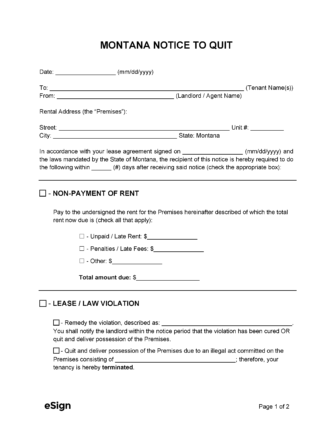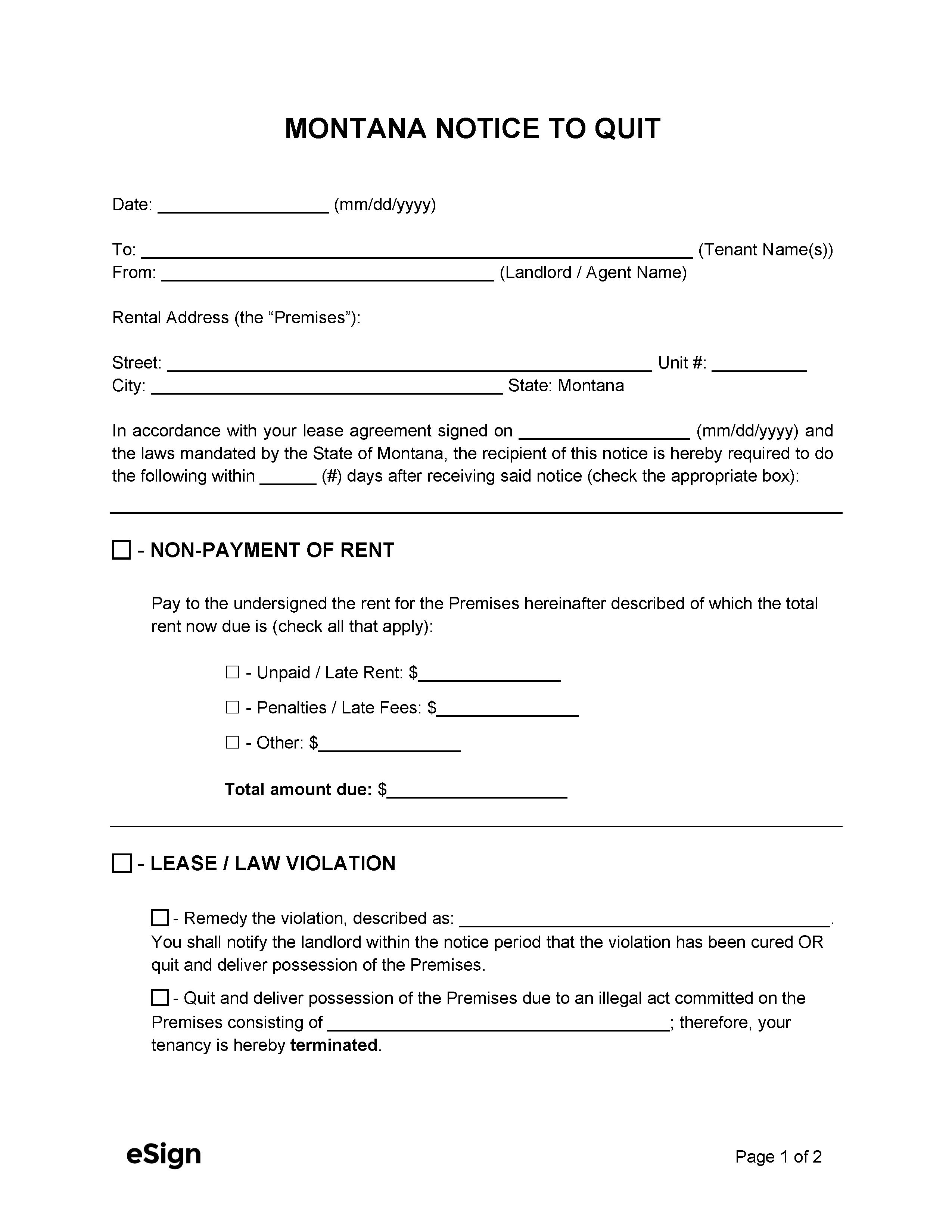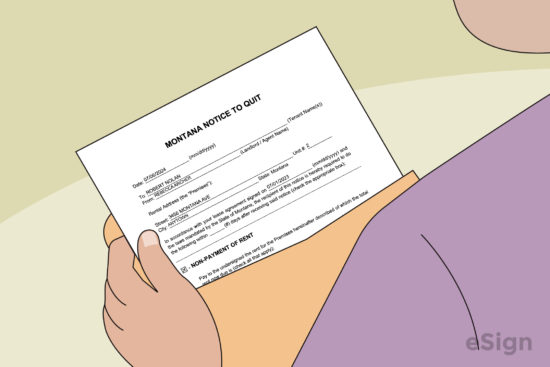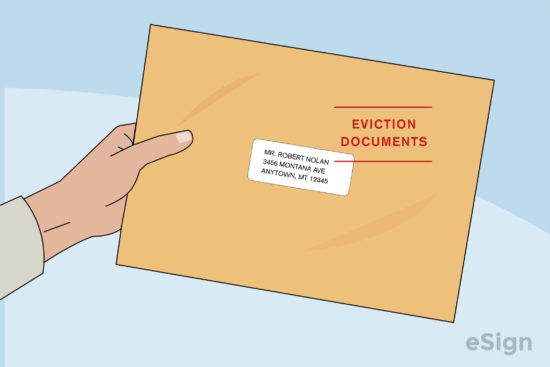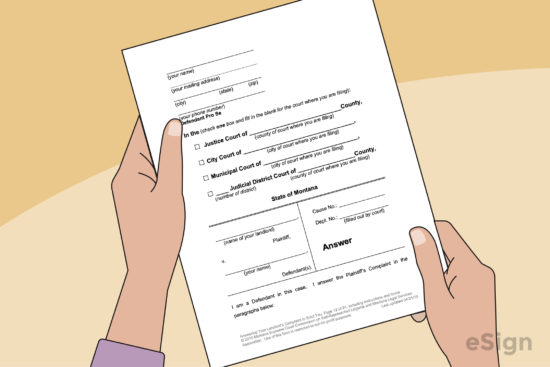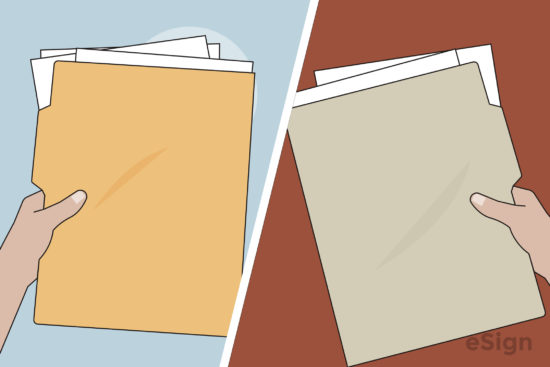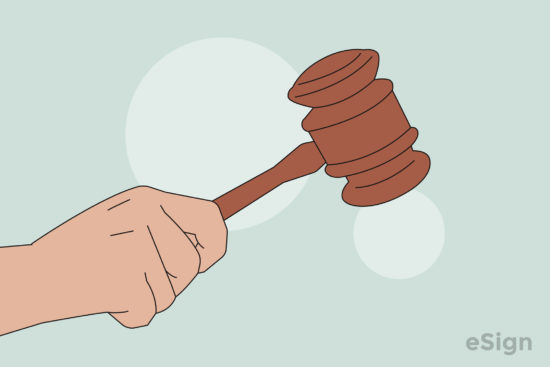Eviction Notices: By Type (7)
3-Day Notice to Quit | Non-Payment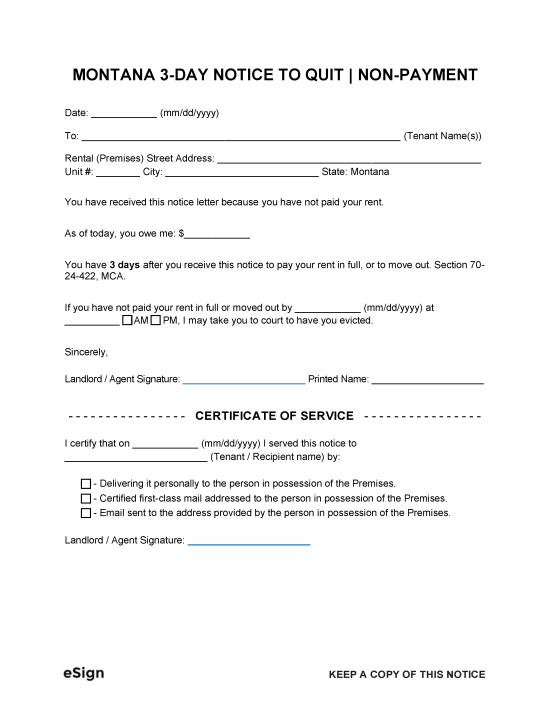 – Informs tenants that they must pay rent or move out within three days of receiving the notice. – Informs tenants that they must pay rent or move out within three days of receiving the notice.
Download: PDF, Word (.docx), OpenDocument |
14-Day Notice to Quit | Non-Compliance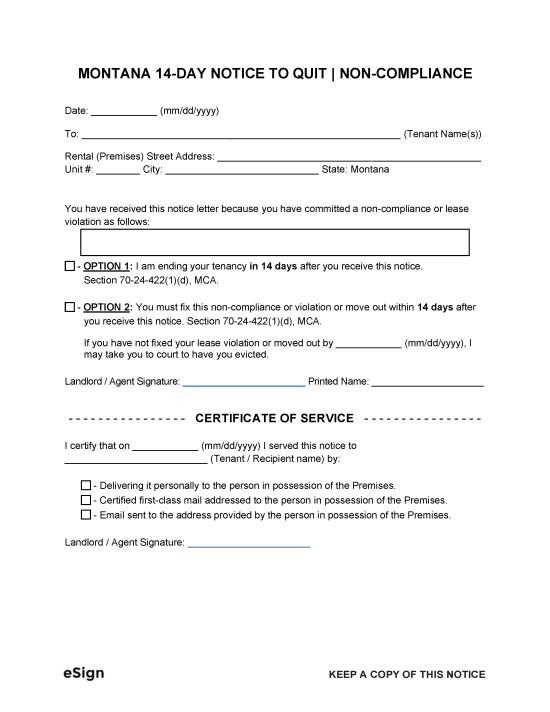 – Gives a tenant 14 days to fix a lease violation or move out. – Gives a tenant 14 days to fix a lease violation or move out.
Download: PDF, Word (.docx), OpenDocument |
3-Day Notice to Quit | Unauthorized Pets/Persons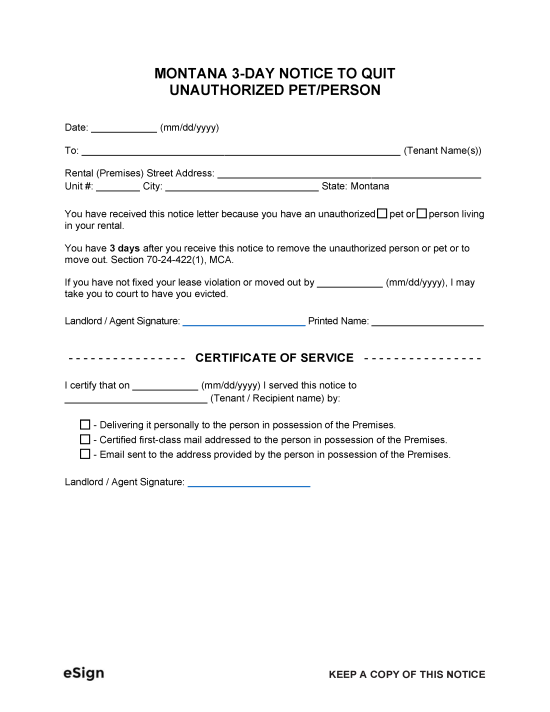 – Provides tenants with three days to move out or remove an unauthorized pet or person from the property. – Provides tenants with three days to move out or remove an unauthorized pet or person from the property.
Download: PDF, Word (.docx), OpenDocument |
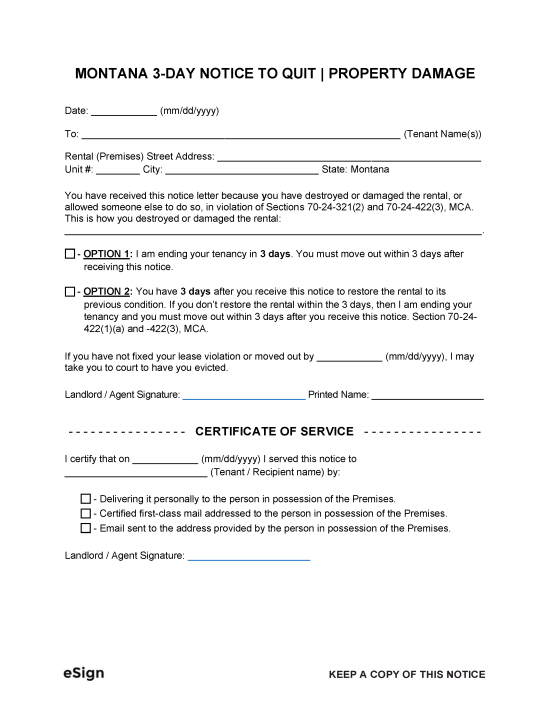 3-Day Notice to Quit | Property Damage – Informs a tenant that they may be evicted in three days for damaging the property. 3-Day Notice to Quit | Property Damage – Informs a tenant that they may be evicted in three days for damaging the property.
Download: PDF, Word (.docx), OpenDocument |
5-Day Notice to Quit | Repeat Violation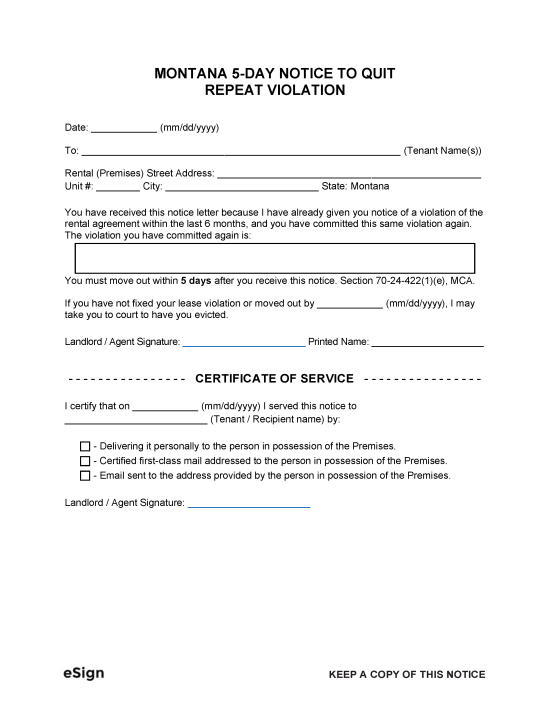 – If a tenant commits a repeat violation within six months of an initial infraction, this gives them five days to vacate. – If a tenant commits a repeat violation within six months of an initial infraction, this gives them five days to vacate.
Download: PDF, Word (.docx), OpenDocument |
30-Day Notice to Terminate Month-to-Month Lease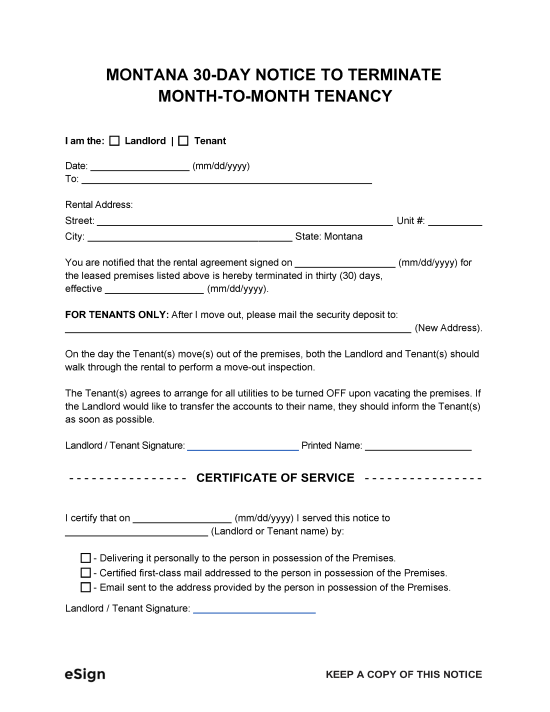 – This notice terminates a month-to-month tenancy with 30 days’ notice to the other party. – This notice terminates a month-to-month tenancy with 30 days’ notice to the other party.
Download: PDF, Word (.docx), OpenDocument |
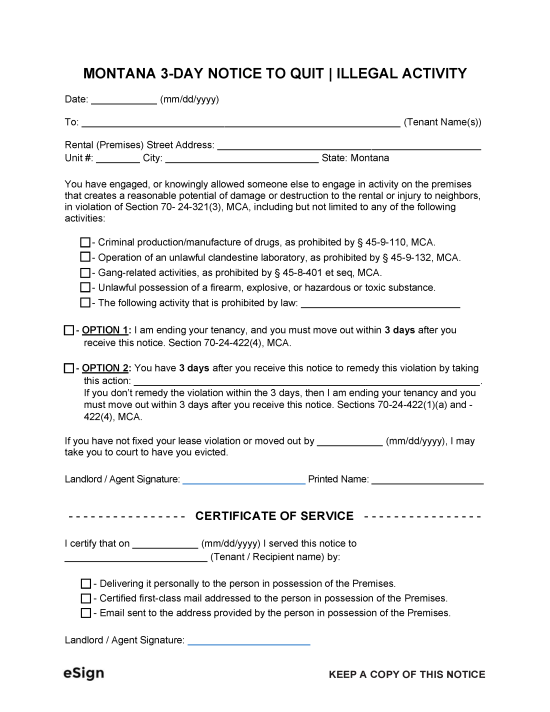 3-Day Notice to Quit | Illegal Activity – Informs a tenant that their lease is terminated with three days’ notice due to their arrest or criminal activity. 3-Day Notice to Quit | Illegal Activity – Informs a tenant that their lease is terminated with three days’ notice due to their arrest or criminal activity.
Download: PDF, Word (.docx), OpenDocument |
Notice Requirements
- Grace Period – Not mentioned in state statutes.
- Non-Payment of Rent – 3 days.[1]
- Non-Compliance – 14 days.[2]
- Unauthorized Pets/Persons – 3 days.[3]
- Property Damage – 3 days.[4]
- Lease Non-Compliance (Repeat Violation) – 5 days.[5]
- Periodic Tenancy Termination – 30 days.[6]
- Illegal Activity – 3 days.[7]
How to Evict a Tenant in Montana
Step 1 – Notice to Quit
The landlord must fill out the appropriate Notice to Quit to include the personal information of both parties and a description of the reason for eviction.
- 3-Day Notice to Quit for Non-Payment
- 14-Day Notice to Quit for Non-Compliance
- 3-Day Notice to Quit for Unauthorized Pets/Persons
- 3-Day Notice to Quit for Property Damage
- 5-Day Repeat Violation
- 3-Day Notice to Quit for Illegal Activity
- 30-Day Notice to Terminate Month-to-Month Lease
The completed Notice to Quit must be delivered to the tenant in person, by first-class mail, or by email. If sent by mail, three days must be added to the notice period.
Step 2 – Complaint for Possession
If the tenant doesn’t comply with the notice, the landlord can file a Complaint for Possession with the district court, municipal court, justice court, or city court where the property is located (Court Locator) to have them evicted.
The Summons, Order Setting Hearing, and Judgment forms must also be completed and filed.
The court clerk will input the case details in the Summons document and return it to the landlord.
All paperwork needed to file an eviction lawsuit can be accessed in the Action for Possession Packet.
Step 3 – Summons
The landlord must complete a Request to Serve Documents and give it to the sheriff’s office along with the Complaint for Possession, Summons, and a self-addressed envelope.
The sheriff will serve the Complaint for Possession and Summons on the tenant and provide the landlord with a Proof of Service to be filed with the court.
Step 4 – Tenant’s Answer
To avoid default judgment, the tenant must submit an Answer to the court along with a Judgment form and (if applicable) Statement of Inability to Pay Court Costs and Fees within five business days of being served.
The tenant must mail a copy of the Answer to the landlord and file a notarized Proof of Service with the court.
If the tenant fails to respond after five days, the landlord may ask the court to render a default judgment in their favor.
Step 5 – Prepare for Eviction Hearing
A hearing date will be scheduled to take place within 10 days of the tenant’s Answer. After the hearing date is scheduled, the landlord and tenant will receive copies of the Order Setting Hearing by mail.
Step 6 – Judgment
At the hearing, the court will review the evidence presented by both parties and issue a Judgment. If either party doesn’t attend the hearing, a judgment may be given in favor of the individual who is present.
If the tenant wins the lawsuit, they will retain their right to occupancy of the rental unit. If the landlord prevails, the judge will issue a Writ of Possession and Writ of Assistance, and the tenant will be required to leave.
Step 7 – Enforce Eviction Judgment
If the tenant continues to occupy the premises after being ordered to vacate, the landlord must deliver the Writ of Assistance to the sheriff’s office and request that they evict the tenant. Law enforcement will then visit the dwelling to remove the tenant from the property.
Court Forms + Resources
Forms
The following documents are included in the Action for Possession Packet:
- Complaint for Possession
- Signed by: Landlord
- Judgment
- Signed by: Judge
- Order Setting Hearing
- Signed by: Judge
- Proof of Service
- Signed by: Deputy Sheriff
- Request to Serve Documents
- Signed by: Landlord
- Summons
- Signed by: Court Clerk
Additional Court Forms:
- Answer
- Signed by: Tenant
- Statement of Inability to Pay Court Costs and Fees
- Signed by: Tenant
- Writ of Assistance
- Signed by: Judge
Resources
